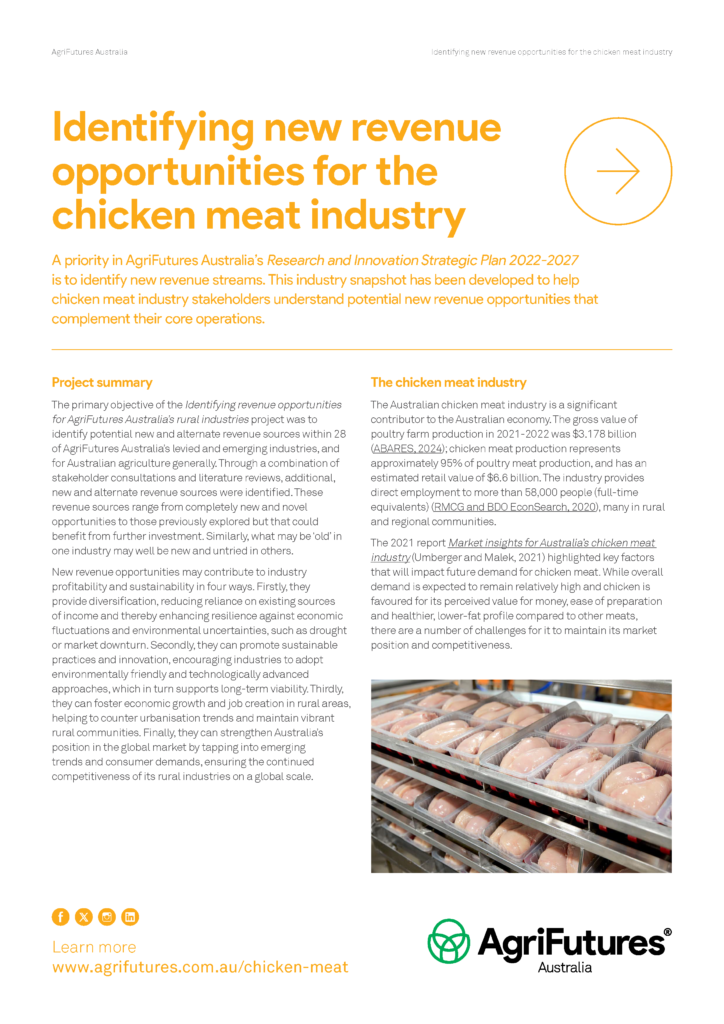The primary objective of the Identifying revenue opportunities for AgriFutures Australia’s rural industries project was to identify potential new and alternate revenue sources within 28 of AgriFutures Australia’s levied and emerging industries, and for Australian agriculture generally. Through a combination of stakeholder consultations and literature reviews, additional, new and alternate revenue sources were identified. These revenue sources range from completely new and novel opportunities to those previously explored but that could benefit from further investment. Similarly, what may be ‘old’ in one industry may well be new and untried in others.
New revenue opportunities may contribute to industry profitability and sustainability in four ways. Firstly, they provide diversification, reducing reliance on existing sources of income and thereby enhancing resilience against economic fluctuations and environmental uncertainties, such as drought or market downturn. Secondly, they can promote sustainable practices and innovation, encouraging industries to adopt environmentally friendly and technologically advanced approaches, which in turn supports long-term viability. Thirdly, they can foster economic growth and job creation in rural areas, helping to counter urbanisation trends and maintain vibrant rural communities. Finally, they can strengthen Australia’s position in the global market by tapping into emerging trends and consumer demands, ensuring the continued competitiveness of its rural industries on a global scale.
Industry-specific challenges
Specific insights relating to the Australian chicken meat industry include:
1. Chicken meat price competition – price is a key driver of industry success and opportunities for new and additional revenue are generally being pursued.
2. Changing consumer preferences are influencing consumption patterns; a trend of reduced meat consumption is emerging.
3. Effluent, water and energy management and solutions will influence the industry’s capacity to manufacture products with reduced environmental impact.
4. Attracting, developing and maintaining a skilled workforce is critical to industry success.
Industry-specific opportunities
Specific opportunities relating to the Australian chicken meat industry include:
1. RD&E to enable cost-effective, high-quality and sovereign feedstock solutions, to keep pace with evolving genetic programs and nutritional demands.
2. Continuing to invest in shed capacity, infrastructure, maintenance, systems and processes, to maintain current market production and meet estimated 3% industry growth requirements.
3. Growing consumer interest in production-related attributes, such as free range, animal welfare and low environmental impact.
4. Producing new chicken products, including pre-packaged meal options and using the feet and giblets in products for export.





